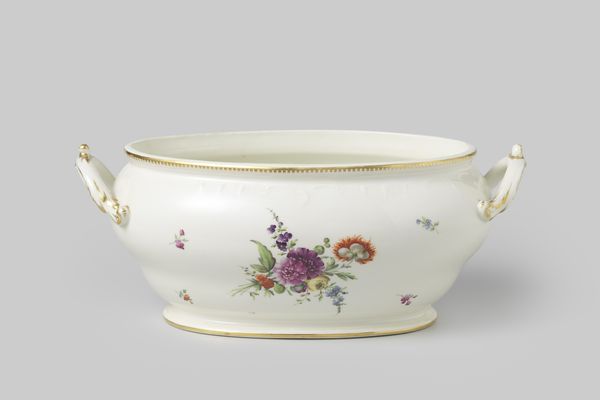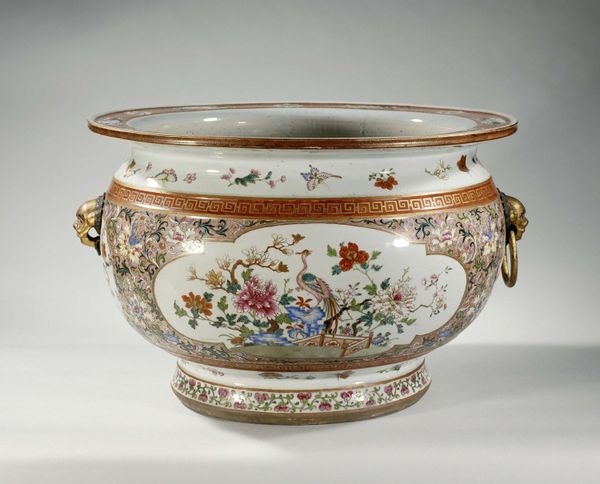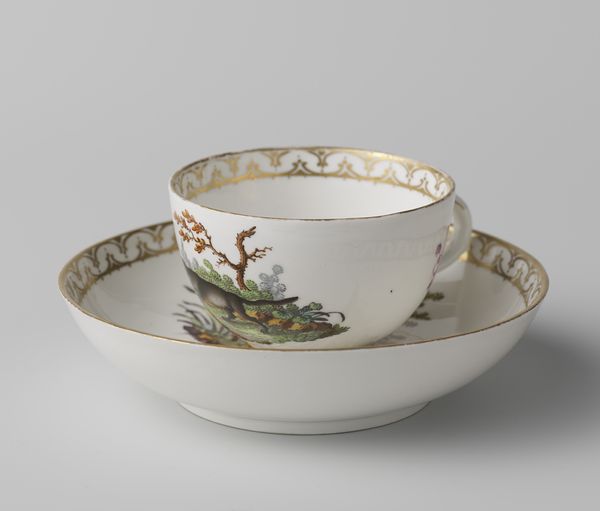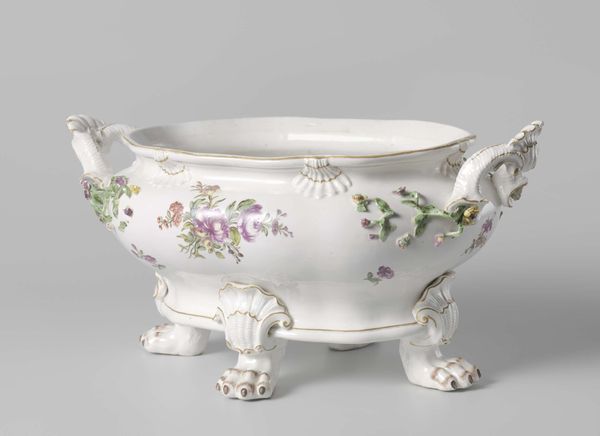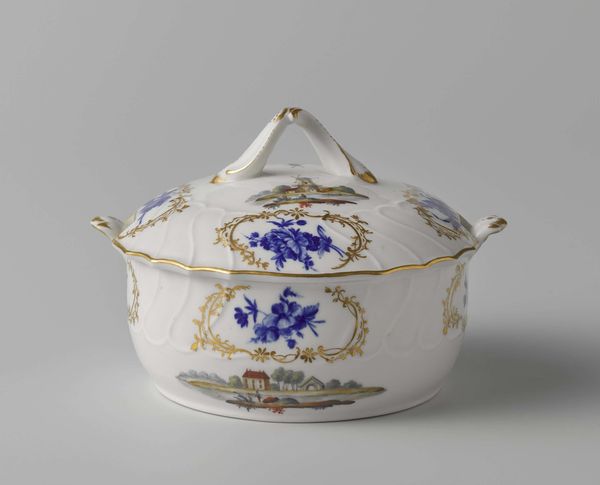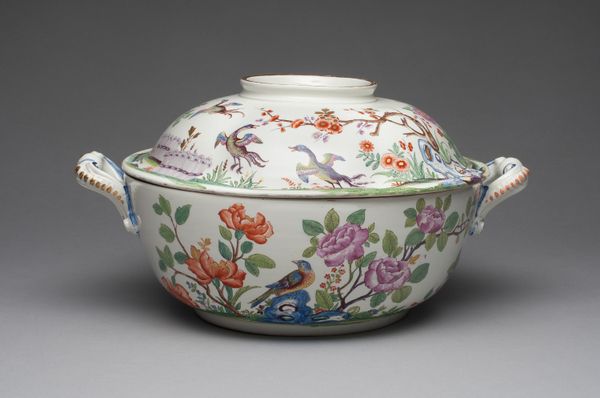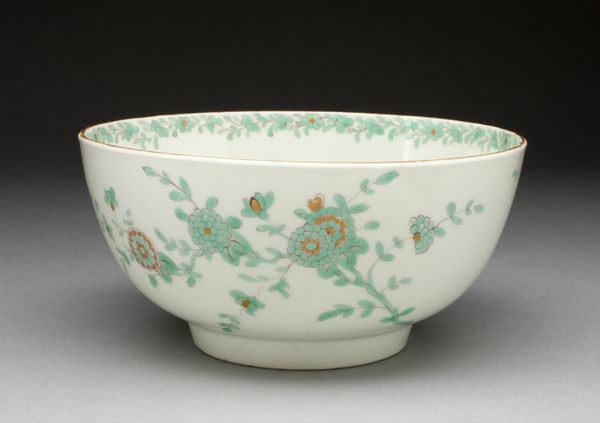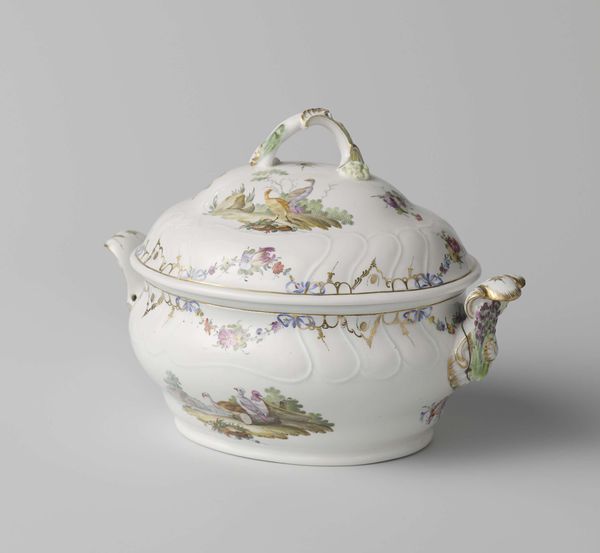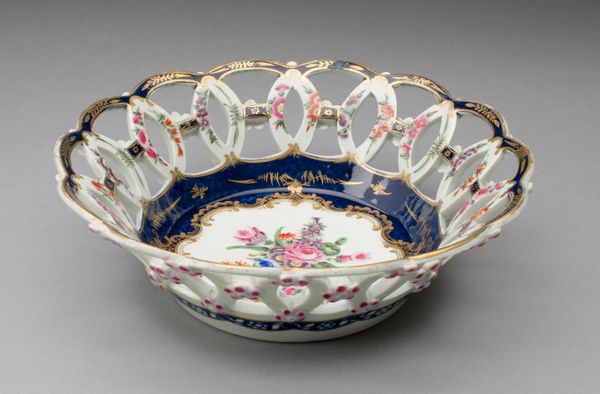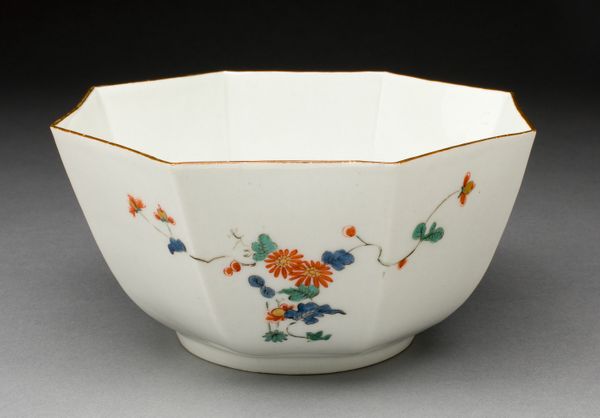
Copyright: Rijks Museum: Open Domain
Curator: This is a tureen and stand made around 1778 in Doornik. It is earthenware with ceramic elements, currently held in the Rijksmuseum collection. What strikes you most about it at first glance? Editor: The delicacy, actually. It’s surprisingly serene for a serving dish—more like a decorative centerpiece, with those restrained colors and subtle curves. Curator: The piece is a strong example of the Rococo style in its ornamentation. The handles are sculpted, and gilded with gold highlights; what could these accents suggest about the commissioner’s lifestyle? Editor: Well, considering this kind of artisanal work represents significant time and skilled labor, we are almost certainly dealing with the leisure class. Its original owner was positioned high enough within society that such a fanciful object held value as an object. Curator: Absolutely. And if we examine the landscape scene depicted on the side of the tureen, it's likely representative of an idealized view of the countryside from a specific sociopolitical vantage point. A vision crafted and consumed within that privileged circle. Editor: And who likely did this type of porcelain manufacture reinforce? There were laborers who may never have known the sort of food, served inside, or even entered the kinds of manor house where such things would be displayed. It also brings to mind how materials such as clays travel—the geopolitics of material extraction and globalized economies always in play. Curator: Indeed. Focusing on its creation and cultural context highlights that this tureen represents not just fine craftsmanship, but the stratified society in which it was created, and also opens a window into global dynamics of commerce and power. Editor: Right. It forces us to confront some complex issues while appreciating craft and technique. A seemingly simple object becomes a mirror reflecting power dynamics. Curator: Thank you. Exploring such historical creations critically provides valuable lessons applicable far beyond the gallery. Editor: Exactly. Objects like these spur vital conversations about the stories of class, material sourcing, labor, and taste encoded in our things.
Comments
rijksmuseum about 2 years ago
⋮
Lijncker’s factory in The Hague specialized in complete services, which could consist of more than 300 pieces. These are two parts of the service made for the Dordrecht regent Johan de Roo. On the tureen is a view of his estate Westmaas, and on the stand the bridge at Uithoorn. In 1962 it was given to the then Dutch queen Juliana and Prince Bernhard for their 25th wedding anniversary.
Join the conversation
Join millions of artists and users on Artera today and experience the ultimate creative platform.
